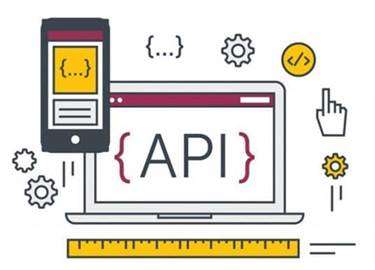Content
Organizations have always struggled to balance traditional ERP’s high costs and complexity against the need for customized features and flexibility, all while meeting the demands of the business. Watch and learn how Oracle ERP Cloud delivers connected teams, unified data, and real-time insights to help you and your finance team ensure that the best business decisions are made. With ERP delivered as a service in the cloud, your organization can be future-ready and outpace change.
While this may seem straightforward, it can be challenging if you lack the right tools. EMS is an effective tool that automates specific processes, thus, increasing employee productivity. Your team will not waste time on various tasks because the software can handle the tasks automatically.
Real-Time Access to Information
Briefly explain the types of data storage and its relationship with the CPU. Explain the difference between direct costs, indirect costs, fixed costs, and variable costs, provide a real-world example explaining each of the above. Product lifecycle management refers to the handling of a good as it moves through five typical stages of types of enterprise systems its lifespan, from development to decline. Employing change management principles throughout the ERP life cycle can prevent or reduce failures that compromise full implementation. Once all departments are tied into the system, all data is collected on the server and becomes instantly available to those with permission to use it.

Some companies may also be reluctant to let go of old software that worked well in the past. The key is to prevent ERP projects from being split into smaller projects, which can result in cost overruns. Some businesses benefit from enhanced real-time data reporting from a single source system.
Three Different Types of Enterprise Systems
With the help of enterprise resource planning systems, information can flow seamlessly across the firm. Also, different business processes from sales, production, manufacturing, logistics, and human resources can be integrated into organization-wide business processes. ERP systems are designed around a single, https://globalcloudteam.com/ defined data structure that typically has a common database. This helps ensure that the information used across the enterprise is normalized and based on common definitions and user experiences. Simply put, ERP is the vehicle for integrating people, processes, and technologies across a modern enterprise.
- This approach has been taken by a number of large companies, including Hewlett-Packard, Monsanto, and Nestlé.
- The system collects and analyzes data from various sources, like marketing, sales, manufacturing, HR, etc., using data mining, benchmarking, and advanced statistical algorithms.
- Using an Enterprise Resource Planning system can be a major benefit for companies looking to streamline their customer service experience.
- As time went on, many organizations discovered that their on-premises ERP systems couldn’t keep up with modern security demands or emerging technologies such as smartphones.
- The use of the word “business” is not intended to mean only for-profit commercial ventures.
It provides thorough data analytics, giving organizations insights into how to build stronger customer relations and improve the quality of service. According to Martin Fowler, “Enterprise applications are about the display, manipulation, and storage of large amounts of often complex data and the support or automation of business processes with that data.” Each enterprise software solution is designed for a specific business goal and offers different functionalities. The major players in this market are SAP AG, Oracle Corporation, Microsoft Corporation, Infor Inc., Kronos Incorporated, and IBM Corporation. When deciding on the choice, make sure the solution complies with strategic planning and the major goals of your organization and suits you in terms of the cost of implementation and, above all, maintenance.
What Are the Types of ERP?
This again emphasizes the importance of storing business data in a usable format. Ultimately, the ability to streamline the supply chain means that products are delivered to customers more reliably, and at a lower cost, than would otherwise be possible. Business environments are always changing, and that means that waiting months for data is simply no longer feasible. Having access to real-time information about a business’s operations is a powerful feature of enterprise systems. A high level of access to data allows leadership to assess and improve upon the company’s processes far more efficiently than if they had to wait months before having actionable data.

Avoiding customizations or updating business processes to match the system is also helpful. Distinguish between a push-based and a pull-based model of supply chain management and explain how contemporary supply chain management systems facilitate a pull-based model. They need to consider foreign government regulations and cultural differences.
Understanding Enterprise Resource Planning (ERP)
To place one order, customers had to call many units and process several invoices. The firm wrote off $6 million annually because of uncoordinated inventory management. Maybe it’s harder for you to manage inventory, satisfy customers, or keep costs in check. If so, your business processes may need to be restructured to accommodate growth or changing priorities – a natural fit for ERP software. Large companies with global or subsidiary operations need a robust,market-leading ERP systemwith embedded AI, machine learning, and analytics – and intelligent automation to transform business models and processes.

After development, the system gets back in-house for deployment, which usually requires a specialized technology team. Although modules and configuration tables let you customize the system to some degree, your options will be limited. If you have an idiosyncratic way of doing business, you will likely find that it is not supported by an ES. One company, for example, had long had a practice of giving preferential treatment to its most important customers by occasionally shipping them products that had already been allocated to other accounts. It found that its ES did not allow it the flexibility required to expedite orders in this way. Another company had always kept track of revenues by both product and geography, but its ES would allow it to track revenue in only one way.
Examples of Enterprise system in a sentence
ERP systems typically operate on an integrated software platform using common data definitions operating on a single database. Services provided by enterprise software are typically business-oriented tools. As enterprises have similar departments and systems in common, enterprise software is often available as a suite of customizable programs. Generally, the complexity of these tools requires specialist capabilities and specific knowledge. Enterprise computing is the information technology tool that businesses use for efficient production operations and back-office support. These IT tools cover database management, customer relationship management, supply chain management, business process management and so on.